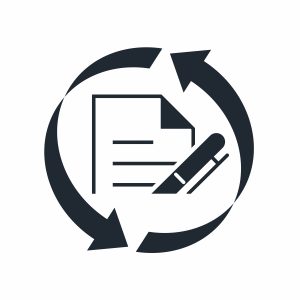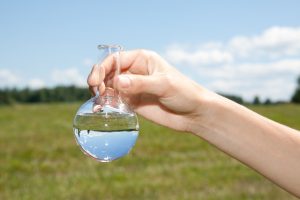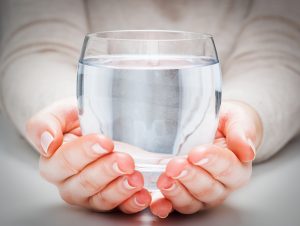The Glyphosate Renewal Group Newsletter- January 2023
Welcome to the first 2023 edition of the Glyphosate Renewal Group (GRG) Newsletter
In this new edition, we invite you to read about the recent regulatory milestone, as the European Commission adopted a one-year extension for the current approval of the active substance glyphosate to allow sufficient time for EFSA to conclude the ongoing scientific evaluation.
Do not miss the chance to learn more about the Environmental Quality Standards (EQS), the thresholds in place in the EU designed to protect receiving surface waters from the harmful effects of contaminants, and the proposed thresholds for glyphosate.
Diving deeper into the water theme (pun intended), we also share information on monitoring for the presence of glyphosate and its metabolite in water, drinking water treatment, and the impact of treatment practices on these residues.
Finally, we invite you to consult the GRG website for the publication of the GRG’s positions on scientific issues relevant to the evaluation process as part of our transparency commitment.
We invite you to connect with us; we listen, and we engage.
Visit our website (available in 9 languages) to learn more, or contact us directly.
___________________________________________________________________________
The European Commission adopted a one-year authorisation extension
Setting Environmental Quality Standards for glyphosate
Useful information
Environmental monitoring of Glyphosate & its metabolite in the EU
Treatment of drinking water and its impact on residues of glyphosate and its main metabolite
Website news
GRG positions on scientific topics are available

The European Commission adopted a one-year authorisation extension
On 2 December, the European Commission adopted Implementing Regulation (EU) 2022/2364, extending the current approval of the active substance glyphosate by one year – until 15 December 2023.
The extension followed the European Food Safety Authority (EFSA) and the European Chemicals Agency (ECHA) statements on the updated timelines for the re-evaluation process in May 2022.
Such a procedure is not unique to glyphosate; it was granted to every other plant protection active substance that required this temporary administrative extension in the EU to complete the evaluation, as provided in Article 17 of Regulation (EC) No 1107/20091 concerning the placing of plant protection products on the market.
The GRG welcomes the Commission’s decision to provide the one-year extension to allow sufficient time for EFSA to conclude the ongoing scientific evaluation.
___________________________________________________________________________
Setting Environmental Quality Standards for glyphosate
Environmental Quality Standards (EQS) are set to protect surface waters (river, ocean, stream, or other watercourses into which wastewater or treated effluent is discharged) from the harmful effects of contaminants.
On 26 October 2022, the Commission published a proposalfor the revision of the List of Groundwater and Surface Water Pollutants, thereby also setting surface water threshold values for glyphosate.
The revised list was published while the process for the review of the EQS for glyphosate was still ongoing under the Water Framework Directive (WFD, 2000/60/EC). Since the publication, the process has been completed.
Read more about setting Environmental Quality Standard for glyphosate
___________________________________________________________________________
Useful Information

Environmental monitoring of Glyphosate & its metabolite in the EU
Monitoring for the presence of chemicals in the environment, such as agrochemicals, involves collecting samples from different environmental compartments, such as soil, water, and air. Samples are analysed, providing insights into the extent of environmental exposure.
A vast body of publicly available monitoring data on concentrations of glyphosate and its metabolite* AMPA** have been collected by the GRG from various sources in the EU (e.g., national authorities). The amounts of glyphosate and AMPA detected in different compartments are compared against relevant European regulatory thresholds.
For the vast majority of analysed samples, levels are below these regulatory thresholds. The rare exceedances are still so low in concentration that they do not pose any risk to the environment or human health.
The extent of compliance of the level of glyphosate and AMPA residues with these regulatory thresholds is extremely high across all environmental compartments.
*Metabolites are formed as a result of chemical reactions occurring through the metabolism of the plant, pests, or soil, ultimately decomposing into carbon dioxide and water. They are thus the result of a desirable process to prevent the persistence of chemicals in the environment.
**Aminomethylphosphonic acid (AMPA) is the main metabolite of glyphosate. It is important to note that AMPA may also be derived from other parent compounds used in both household and industrial applications (e.g., cosmetics, personal care products, softeners, washing and cleaning products)
___________________________________________________________________________

Treatment of drinking water and its impact on residues of glyphosate and its main metabolite
Water treatment processes in the EU are applied routinely to raw water [e.g., taken from surface water (lakes/rivers) or groundwater] destined for drinking water supply.
A predominant portion, 99.9% of the raw water taken directly from surface water, is subjected to disinfection (e.g., by chlorine disinfection) to remove traces of chemicals of various potential origins (including agrochemicals) to ensure that the substances are below the required threshold values, monitored closely in the EU.
The same applies to glyphosate and its metabolite AMPA, which are readily degraded by common disinfection methods (especially chlorination), resulting in high removal efficiency of glyphosate in drinking water.
Publicly available drinking water monitoring data confirm the high compliance with regulatory thresholds at the tap of the consumer.
___________________________________________________________________________
Website News

GRG positions on scientific topics are available
As part of the GRG’s transparency commitment, the GRG has made summary documents and conference presentation footage publicly available on its website. The summaries cover different topics such as toxicology, ecotoxicology, environmental fate, and residues.
They contain information pertinent to the ongoing EU risk assessment of the active substance glyphosate and address the recent EFSA additional information request and stakeholder public consultation comments.
___________________________________________________________________________
Would you like to receive the newsletter via email? Subscribe here.